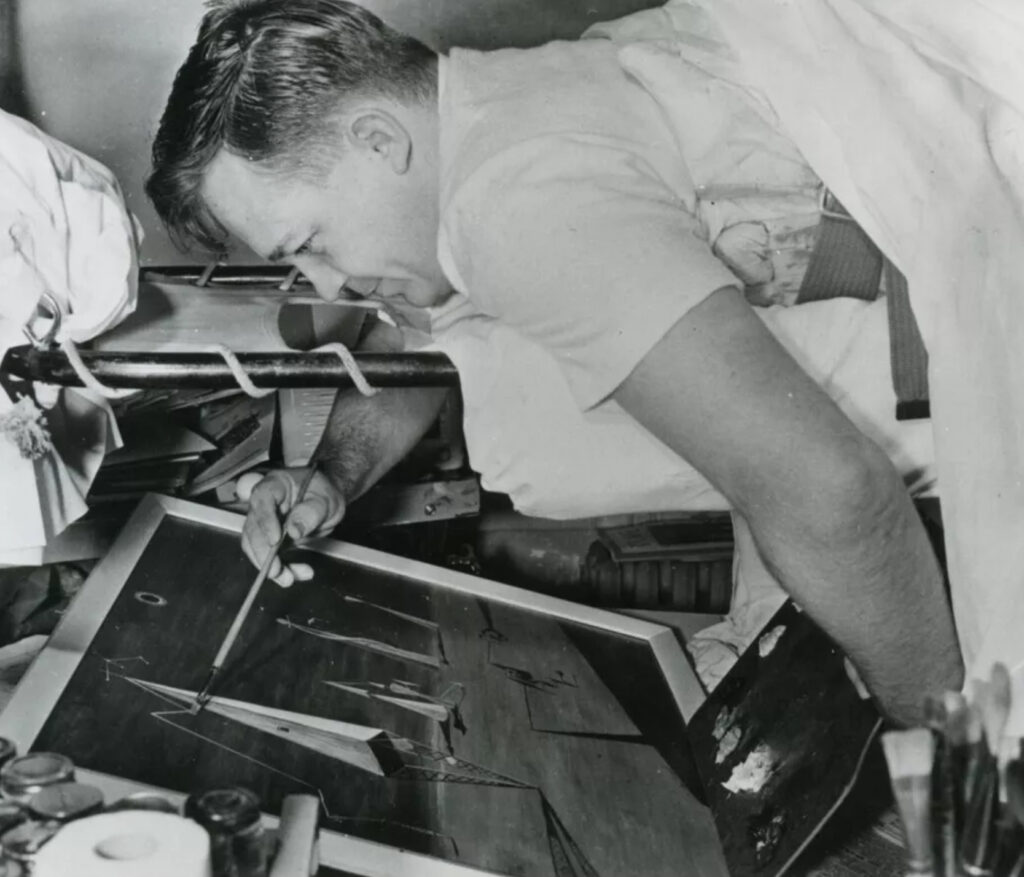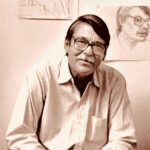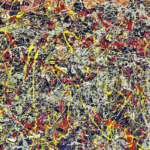Sam Francis
Sam Francis, born on June 25, 1923, in San Mateo, California, emerged as one of the most influential American painters of the 20th century. Renowned for his vibrant use of color and dynamic compositions, Francis’s work spans Abstract Expressionism, Color Field painting, and lyrical abstraction. This article explores his life, artistic evolution, and highlights three of his most notable works.

Early Life and Education
Sam Francis initially studied botany, medicine, and psychology at the University of California, Berkeley. However, his life took a dramatic turn during World War II. After being injured in a plane crash, he was hospitalized for several years. It was during this period of convalescence that he began to paint seriously. Art became a form of therapy and a new career path.
In 1947, after his release from the hospital, Francis returned to Berkeley, where he formally studied painting under the guidance of artist and teacher David Park, who was instrumental in shaping the Bay Area Figurative Movement. By 1950, he had received his Bachelor’s and Master’s degrees in art, setting the stage for his future career.
Career and Artistic Development
Sam Francis’s early work was heavily influenced by Abstract Expressionism, particularly the works of Mark Rothko and Clyfford Still. His initial foray into the art world coincided with his move to Paris in the early 1950s. There, he was introduced to European modernism and the works of artists like Henri Matisse and Pierre Bonnard. These influences are evident in his vibrant use of color and the fluidity of his compositions.
Artistic Style and Themes
Francis’s work is characterized by its luminous color palette, organic forms, and a sense of spontaneity. He often employed a technique of dripping, splattering, and pouring paint onto the canvas, creating dynamic and energetic compositions. His paintings are noted for their use of negative space, with large areas of the canvas left unpainted, giving his work a sense of lightness and airiness.
One of the recurring themes in Francis’s work is the concept of duality—light and dark, order and chaos, fullness and emptiness. His paintings often explore the interplay between these opposites, creating a sense of balance and harmony. This duality is also reflected in his approach to color, where he juxtaposes bold, vibrant hues with softer, more subdued tones.
Notable Works
1. **”Big Red” (1953)
“Big Red” is one of Sam Francis’s most iconic works, created during his time in Paris. The painting features large, bold swathes of red paint contrasted with areas of white and blue. The composition is dynamic, with the red paint seeming to flow and merge with the other colors, creating a sense of movement and energy.
The use of color in “Big Red” is particularly striking, with the vibrant red dominating the canvas and evoking a sense of passion and intensity. This work exemplifies Francis’s ability to create powerful, emotive compositions through his use of color and form.
2. **”Around the Blues” (1957-1962)
“Around the Blues” is a seminal work that showcases Francis’s mastery of color and composition. The painting features a series of blue shapes and forms that seem to float on the canvas, surrounded by areas of white and other colors. The composition is fluid and dynamic, with the blue shapes creating a sense of movement and rhythm.
This work reflects Francis’s interest in the interplay between color and space, with the blue forms creating a sense of depth and dimension. The use of negative space is also significant, with large areas of the canvas left unpainted, creating a sense of lightness and openness.
3. **”The Whiteness of the Whale” (1957)
“The Whiteness of the Whale” is another notable work that exemplifies Francis’s ability to create dynamic, emotive compositions through his use of color and form. The painting features a series of white and blue shapes that seem to float on the canvas, creating a sense of movement and rhythm. The composition is fluid and dynamic, with the white and blue shapes creating a sense of depth and dimension.
The use of white in this work is particularly striking, with the white shapes creating a sense of lightness and openness. This work reflects Francis’s interest in the interplay between color and space, with the white forms creating a sense of balance and harmony.
Techniques and Innovations
Sam Francis was known for his innovative use of materials and techniques. He often used thin layers of paint, allowing the colors to blend and flow together on the canvas. This technique created a sense of depth and luminosity, with the colors seeming to glow from within. Francis also experimented with different painting surfaces, including paper, canvas, and wood, each of which contributed to the unique texture and quality of his work.
One of Francis’s most significant innovations was his use of negative space. By leaving large areas of the canvas unpainted, he created a sense of lightness and airiness in his work. This approach allowed the colors and forms to stand out more vividly, creating a dynamic interplay between the painted and unpainted areas of the canvas.
Personal Life and Influence
Sam Francis’s personal life was as dynamic and colorful as his paintings. He lived and worked in several countries, including France, Japan, and the United States, drawing inspiration from the diverse cultures and landscapes he encountered. His work was deeply influenced by his travels, with each new environment contributing to the evolution of his artistic style.
Francis was also a dedicated teacher and mentor, sharing his knowledge and passion for art with younger generations. He taught at several institutions, including the University of California, Berkeley, and the San Francisco Art Institute, where he inspired and influenced many emerging artists.
Recognition and Legacy
Sam Francis’s contributions to modern art have been widely recognized and celebrated. His works are held in major museums and collections around the world, including the Museum of Modern Art in New York, the Whitney Museum of American Art, and the Tate Gallery in London. He received numerous awards and honors throughout his career, including a Guggenheim Fellowship and a National Endowment for the Arts grant.
Francis’s legacy is marked by his innovative techniques, his bold use of color, and his ability to create dynamic, emotive compositions. His work continues to inspire and challenge artists and viewers alike, reflecting his enduring relevance and significance in the art world.
Conclusion
Sam Francis was a pioneering artist whose work spanned several styles and movements, from Abstract Expressionism to Color Field painting and lyrical abstraction. Through his most notable works, such as “Big Red,” “Around the Blues,” and “The Whiteness of the Whale,” Francis explored the complexities of color, form, and space. His innovative techniques, bold thematic explorations, and profound influence on subsequent generations of artists ensure his lasting legacy in the history of modern art. Francis’s ability to convey emotion and movement through abstract forms continues to captivate and inspire, solidifying his place as a key figure in American art.



